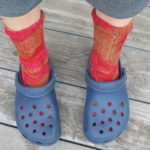
Tom notices a luminous design trend from the future, and Molly digs deep into the eternal mystery of Shen Yun. Then Tom catches up on the latest ice cream trends, and Molly’s trend makes everyone feel entrepreneurial.
Get the episode here.
LINKS:

Tom notices a luminous design trend from the future, and Molly digs deep into the eternal mystery of Shen Yun. Then Tom catches up on the latest ice cream trends, and Molly’s trend makes everyone feel entrepreneurial.
Get the episode here.
LINKS:

In this episode, Tom gets an interesting beverage on tap, while Molly explores a variety of varietals. Then Tom is picking up some classy coloring books, and Molly finds the newest tent hotness for the kiddos. Plus great emails from our listeners talk about Peppa Big, regional booze, and an overused word.
Get the episode here.
LINKS:
This week, Tom is talking about the latest drug and booze things, while Molly takes on a more wholesome tone with sport and cooking. Plus, listeners weight in about bounding, a new travel mug, and Crocs.
Get the episode here.
LINKS:

Tom starts off the show with some architecturally inspired fashion, and Molly thinks the Baja hoodie is making a comeback. Then they discuss a new take on the hot pot, and the emerging thingness of prefab ADUs. Plus, Crocs and socks are a thing.
Get the episode here.
LINKS:

Tom talks about the harrowing battle for getting credit for watching shows on a streaming account, while Molly reflects on the peak thingness of succulents. Then they discuss why libraries are the pace to be, and and super cool dog food.
Get the episode here.
LINKS:
Gute from Patreon on Carthartt:
Hi Tom and Molly
Unggoy Pinoy on fashion again. Carhartt is literally close to my heart since the headquarters are just outside the Motor City. Also, the granddaughter of Hamilton Carhartt owns a string of aspirational shops and cafes near my home.
Carhartt clothing’s mass appeal is multi faceted.
At face value the workwear is affordable, practical, durable, and aesthetically stark. The iconography of hard working men and women in simple silhouettes is timeless. Clothes made with thin material or extraneous decorations and notions can pose a safety risk on the job.
Carhartt as counterculture started in the 80s as a salvo against blue denim. The anonymizing plain jackets made the brand popular amongst a criminal element on the streets and in turn enjoyed fame from the hip-hop scene. At the same time, Carhartt partnered with the European company Work in Progress (WIP) and the two worked together in the 90s creating clothing that appealed to niche creative subcultures.
Thingness folds in on itself in the noughties. I was going back and forth to Europe and seeing Carhartt clothing in major cities; not the overalls, heavy jackets, or duck boots, no. Teens were wearing logo beanies and sweatshirts with ‘carhartt’ embroidered on the chest. WIP created clothes for the European market while rightfully (legally) using their Carhartt license. Soon, one could find Carhartt sections in major European department stores selling skater and street clothes.
So the calculus on Carhartt’s thingness is difficult as each aspect is a thing:
No 1. For some people the cachet of flaunting luxury items has worn off
No 2. The fetishization of a rugged, hard working blue collar man
No 3. Design fanatics love thoughtful, minimalist, and elegant lines à la Muji
No 4. Which is my current working theory: American hipsters are discovering what overseas hipsters are wearing and then coming back to the US to stan a ‘heritage’ brand for example: Timberland, Pendelton, Filson, Converse, or Champion (Champion, enjoying the same Vetements collaboration much like DHL)